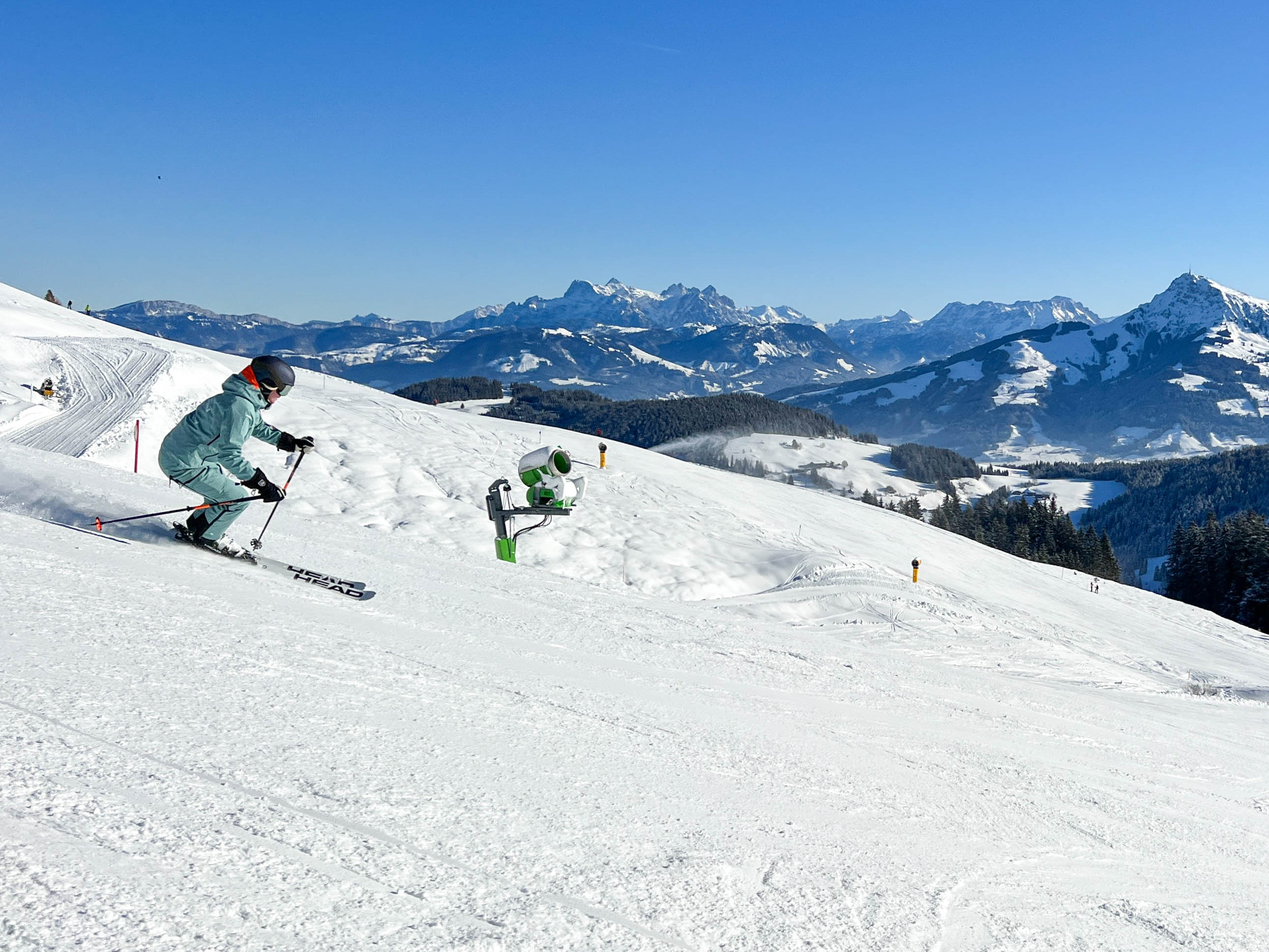

To ensure a long life for your ski equipment and clothing, it's important to treat it right. How do you protect your skis against rust? Where should you store your ski equipment? Should you wash your ski clothing? Ski gear doesn't come cheap, whether it's a pair of brand-name goggles or a plush new helmet. So it's important to take care of it, both during and at the end of the ski season. With a little TLC, you can protect against the rust, odours and general wear and tear caused by factors like moisture and UV rays, and increase the lifespan of your ski gear. We've laid out some steps you can take at the end of the ski season to guarantee your gear will be in the best shape possible for next year.
1. Thoroughly dry your skis/snowboard
It's essential to properly dry your skis or snowboard after each day. It takes two minutes to wipe them down with a clean towel, and you're almost guaranteed the edges will get rusty if you store them wet. Corrosion reduces the grip of your edges, even if the rust isn't visible yet to the naked eye. Once your skis/snowboard are thoroughly dry, store them for the summer in a place away from heat and moisture. If you store them in a ski or snowboard bag, leave it slightly open so it doesn't get humid.

2. Watch out for UV rays
UV rays can be hard on your equipment, causing the colour of your ski pants and jacket to fade and even weakening the plastic of your ski boots! If you find your boots are getting looser, maybe it's time for an upgrade.
3. Dry your ski or snowboard shoes
Smelly odours in ski boots are caused by bacteria, who thrive in the warm, humid environments we create when sweating our way down a challenging piste! Just like your skis/snowboard, it's important to dry your shoes before putting them away. If you can, remove the liner and let it dry a few days before putting it back in. Afterwards, buckle the shoes up and store them like that. This will help them keep their form.
4. Wash your ski clothing
It's a myth that ski clothing isn't supposed to be washed. On the contrary, you should keep your ski clothing clean by regularly washing it whenever necessary. However, do make sure you aren't using fabric softener on it, as this will affect the performance of the moisture wicking and other technical features of ski clothes. Wash in low temperatures and follow the instructions on the label. There are also special sprays you can use if your ski pants or jacket become less waterproof over time.

5. Clean your goggles
Use a microfibre cloth to keep your ski goggles clean. At the end of your ski holiday, unclip them from your helmet and let them dry thoroughly before storing. By storing them clipped onto the helmet you risk affecting the elasticity of the headband.
6. Inspect your helmet closely
Check your helmet regularly for signs of damage such as cracks. Some helmets have a removable inner lining to make washing easier. And some people recommend upgrading your helmet every 5 years, as the UV rays will have affected the integrity of the plastic.

7. Dry your gloves, beanie, balaclava, etc.
This is a no-brainer if you're planning on heading to the slopes the next day, but don't forget to dry all your clothing items on the last day of your ski holiday as well, so they don't start a bacteria colony over the summer. Especially be sure to dry your gloves properly after every day of skiing or snowboarding - they seem to be the first ones to start smelling! Just like your ski pants and jacket, you can spray your gloves to help them protect better against the snow (or rain!). If you have leather gloves, don't dry them directly on the radiator, as this will cause cracks in the leather.
8. Don't forget about batteries
Nowadays a lot of us rely on batteries to go skiing - we use them in our avalanche beacons, helmet cams, fancy ski goggles and more. The lifespan of a battery can diminish over time if it's not used regularly, so always follow the manufacturer's instructions to ensure the longest possible longevity.
Do you have more tips for keeping ski gear in top condition?













